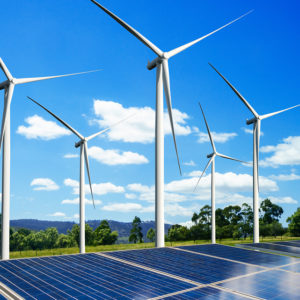(For an alternative point of view, see, “Point: ‘Green Energy Transition’ is a myth”)
In August, Texas surpassed California in the amount of utility-scale solar energy it produces, claiming first place and adding to its longtime lead in wind energy. The Lone Star state, one of the world’s biggest fossil fuel energy producers, has shown that the future of energy is renewable.
It isn’t a mystery why the renewable energy transition has taken off over the past decade, far over even the most optimistic expectations: Between 2010 and 2021, the average cost of new photovoltaic systems fell by 88 percent, while that of onshore wind fell by 68 percent. The cost of offshore wind fell by 60 percent.
In the second quarter of 2024, Texas added 1,656 megawatts of renewable energy to its grid. Over that quarter, a whopping 9.4 gigawatts of new solar electric generation were added nationwide.
The Energy Information Administration (EIA), known for its evenhanded technical expertise, expects the boom in renewable electricity generation to continue. Next year, more than 24 percent of power consumed in the United States will be generated by wind, solar and hydroelectric sources, the EIA says.
The transformation of U.S. energy generation toward renewables is exciting and ultimately unstoppable. Yet, over the same period, shifts in U.S. policy on exporting fossil fuels have driven a boom in drilling and fracking that has enriched fossil fuel CEOs, gouged U.S. consumers and driven our climate toward crisis.
Simply put, fossil fuel producers are doing whatever they can to create a tight market for gas so they can make more money. Between 2016 and 2023, the price U.S. households paid for natural gas skyrocketed by 52 percent as exports of liquefied natural gas surged, according to federal data.
Energy prices have skyrocketed by billions of dollars for American families because big oil and gas companies are exporting liquefied natural gas. Intertwining U.S. natural gas with foreign markets subjects families to volatility and price shocks and harms American businesses forced to compete with China and other countries for American gas.
In 2020, the United States became a net exporter of petroleum for the first time since at least 1949. For each new well drilled, each drop of oil refined, and every export facility opened, more and more fossil fuels are being exported.
When Congress reversed 40 years of policy limiting crude oil export in 2015, lawmakers opened the floodgates to corporate grift, windfall profits and millions of tons of emissions that drive global warming.
The United States is now the largest exporter of methane gas in the world, and the rush to open up new overseas markets has driven a rush to build transport pipelines, export infrastructure and shipping, entrenching a destructive system. These record exports drive up home heating prices for Americans and line the pockets of fossil fuel CEOs. These new planet-wrecking projects are not in the interest of the public. No amount of misleading energy industry lobbying can undo the reality that fuel exports force American consumers to pay more in the long run while U.S.-produced gas winds up in Beijing and Berlin.
President Biden has taken initial steps that could put the brakes on gas exports by revamping the legally mandated public interest analysis process by which they are approved. Doing so is essential to give a voice to heavily polluted Gulf Coast communities and to fairly examine the effect of exports on energy prices and on the climate.
However, the fossil fuel lobby continues to push the growth of exports, often with deceptive arguments, because expanded exports generate windfall profits.
For far too long, Big Oil executives have pursued an “America Last” policy, price-gouging consumers and pushing harmful export policies in a myopic and ham-fisted vision that puts profit above everything.
The expansion of U.S. fossil fuel drilling is driven by a greed-driven market to export American fossil fuels to sustain Big Oil’s ability to continue to earn eye-popping profits, sticking U.S. consumers with higher prices and cementing decades of fossil fuel economies abroad.

